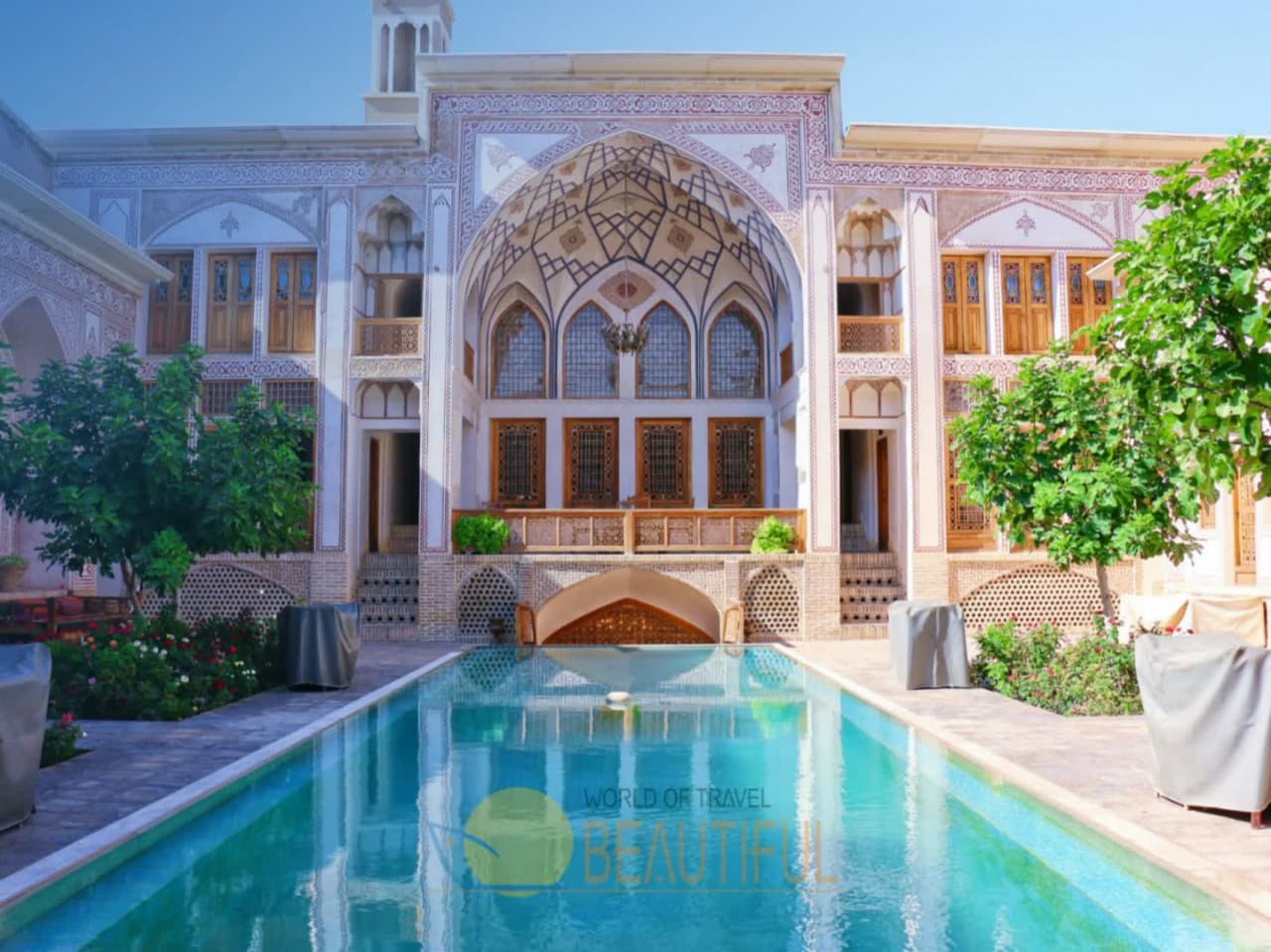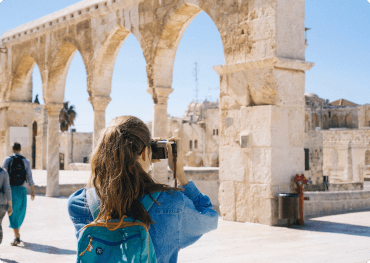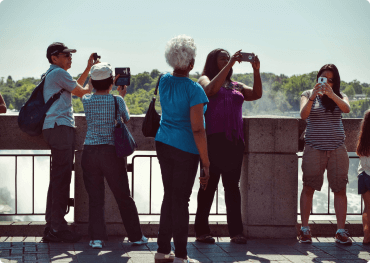
Cu- 106
Package Details
Day 1: Tehran-Kermanshah
Arrival at Tehran meet and assist at airport and then transfer to local airport for flight to Kermanshah. Upon arrival after check in hotel, visit Taq-e Bostan, Takiyeh Mo'aven ol-Molk, Jameh’s Mosque. O/N: Kermanshah. Taq-e Bostan is a site with a series of large rock reliefs from the era of Sassanid Empire of Persia, the Iranian dynasty which ruled western Asia from 226 to 650 AD. This example of Sassanid art is located 5 km from the city center of Kermanshah in western Iran. It is located in the heart of the Zagros Mountains, where it has endured almost 1,700 years of wind and rain. Originally, several sources were visible next to and below the reliefs and arches, some of which are now covered. Sources next to the reliefs still feed a large basin in front of the rock. The site has been turned into an archaeological park and a series of late Sasanian and Islamic column capitals have been brought together. The Taq-e Bostan complex comprise a rock relief standing on its own and several more reliefs associated with two rock cut arches. They illustrate the investiture ceremonies of Ardashir II, Shapur II, Shapur III and Khosrau II. They also depict the hunting scenes of Khosrau II.
Moavenolmolk such beautiful and magnificent works from the period of Qajar in Kermanshah has remained. The monument in the old city of Kermanshah in Absheron district of the Old and in the streets, "Haddad Adel" is located. On 10 Persian date Azar 1354 with registration number 945 this effect as one of the national monuments have been recorded
Kermanshah Mosque, which is sometimes mistakenly called Chehel Mosque in the old city Kermanshah, in the streets of Madras (former Sepah), the corner of the forecourt and not to Rashid Street Yassami (Nawab Safavi) located notable works late Zand is. The mosque in 1196 AH (1781 AD) during the reign of “Ali Mradkhan out” by Ali Khan Zanganeh made the ruling Kermanshah. Now the venue for Friday Prayers Shiite mosque in the city of Kermanshah.
Day 2: Kermanshah-Hamadan Morning drive to Hamadan (184 km) on the way visiting Anahita Temple and Bisotun. In Hamadan Visit Avecina and Baba Taher tombs. O/N: Hamadan.
Anahita Temple: Temple monument in the city today Kangavar is located. Kangavar in the middle of modern Hamadan, Kermanshah and the historical way Hegmataneh Ctesiphon is located. The building with an area of 6.4 hectares, on a rocky ridge overlooking the plain Gngavr was created. Anahita, the angel and the guardian of water and an abundance of beauty and fertility among Iranians has been the official and dignity. "It remains a magnificent temple is the largest stone buildings in Building 209 at 244 meters Foursquare rectangular in size over the low-lying bed of silica volcanic rocks in Kermanshah Province is located in the city Kangavar. Anahita temple, like the tall buildings built from scaffolding practices (the account of) Iran Bob was in the plains and subsequent periods is also important monuments, temples and some government buildings have been built on the platform. Over this monument was erected a row of stone columns that the height of each column is 54/2 meters. Verdi according to a two-way staircase built on the southern side and in front of the northeast stairs one-way access road to the site has made it possible.
Bisotun inscriptions world's largest inscriptions, the earliest known text of Persia and of the dynasty, the Achaemenids (520 BC. M), located in the city Inscription of functions Harsin city thirty kilometers in the province of Kermanshah on the slopes of Mount Bisotun is. Behistun Inscription One the most famous and important documents in the history of the world and the most important historic text at the time of the Achaemenids is which describes the victory of Darius the Magi Gvmath shows and imprison rebels. Inscription area of national monuments and their effect since 2006 recorded one of Iran’s UNESCO World Heritage is.
Mausoleum of Baba Taher: Babataher that around the end of the fourth century and early fifth century lived, his time is of great poets and mystics. More time passed his life in poverty. He is one of the most famous Iranian poets of that time failed two-bit bit of passion and motivation that is written with an accent Laki language of the robbed. Of couplets Baba Taher In addition, other literary works remains such that it can be divided into two pieces, a few poems, a collection of aphorisms Arabic and the book finally be mentioned. Baba Taher collection of aphorisms in Arabic, his mystical beliefs and worship and ecstasy and love of knowledge and noting stated that the mystic consisted of 420 subjects fifty Bob and together with the end of misc. His last book consists of two parts. The first part is a treatise on the beliefs of mystics and Sufis with aphorisms and second part of the essay is called (Futuh al-Hamdani Alrbany fi references) as if it Commentator Johnny Bic Hamedan. In the inner courtyard of the tomb 24-bit on 24 beautiful piece of stone carved in the lower part of the inner courtyard of Mazar-installed. In addition to his two literary works is another bit of Baba left that can be divided into two pieces and several poems and a book entitled "Finally," noted.
Day 3: Hamadan After breakfast, visit of Alisadr cave, afternoon visit Esther & Mordcai Tomb. O/N: Hamadan. The Ali Sadr Cave originally called Ali Saadr or Ali Saard (meaning cold) is the world's largest water cave which attracts thousands of visitors every year. It is located in Ali Sadr Kabudarahang County about 100 kilometers north of Hamadan, western Iran (more accurately at 48°18'E 35°18'N). Because of the cave's proximity to large cities such as Hamadan, it is a highly recommended destination for tourists from all corners of the world. Tours of the cave are available by pedalos. Alisadr is the world's biggest water cave, where you sit in a boat and watch the view. This cave is located at 48°18'E 35°18'N, in the southern part of Ali Sadr village. The cave is entered at the side of a hill called Sari Ghiyeh which also includes two other caves called Sarab and Soubashi, each 7 and 11 kilometers from Ali Sadr Cave. Apparently, the water in Ali Sadr cave stems from a spring in Sarab
Mausoleum or tomb of Esther and Mordechai among the most important shrines of the Jews of Iran and the world. The tomb is part of the cultural heritage of registration. These shrines are an important factor in the formation and persistence of the Jewish community was in Hamadan.
Day 4: Hamadan- Kashan Morning drive to Kashan (400 km), visit Brujerdi's old house and Fin garden. O/N: Kashan. Home Borujerdian the historic city of Kashan is. The building is located in the neighborhood Sultan Mir Ahmad and in the second half of the 13th century Hijri built in Qajar era and was registered under the number 1083 in the national index. The house has a beautiful crescent-shaped symmetrical vents on the roof of the hall and pergola on one of the most beautiful manifestations of Persian architecture to display it. So that the inscriptions on all four sides of the hall, the building dates back to 1292 BC E..
Fin Garden, or Bagh-e Fin, located in Kashan, Iran, is a historical Persian garden. It contains Kashan's Fin Bath, where Amir Kabir, the Qajarid chancellor, was murdered by an assassin sent by King Nasereddin Shah in 1852. Completed in 1590, the Fin Garden is the oldest extant garden in Iran. The origins of the garden may be anterior to the Safavid period; some sources indicate that the garden has been relocated from another place, but no clear picture of it has been found.
Day 5: Kashan – Isfahan
After breakfast, drive to Isfahan (218 km), in the way visit Abyaneh village. Evening arrival Isfahan, check in hotel. At Night, visit Old bridges of Zayandeh River, called Si-o-She Pol & Khaju Bridge. O/N: Isfahan. Abyaneh is a village in Barzrud Rural District, in the Central District of Natanz County, Isfahan Province, Iran. At the 2006 census. Characterized by a peculiar reddish hue, the village is one of the oldest in Iran, attracting numerous native and foreign tourists year-round, especially during traditional feasts and ceremonies. An Abyanaki woman typically wears a white long scarf (covering the shoulders and upper trunk) which has a colourful pattern and an under-knee skirt. Abyanaki people have persistently maintained this traditional costume.On top of the village sits the ruins of a Sasanid era fort. The dialect of the people of Abyaneh has preserved some characteristics of the Middle Persian language, the language of the Sassanian Persia.
Allāhverdi Khan Bridge, popularly known as Si-o-seh pol “The bridge of thirty-three spans” is one of the eleven bridges of Isfahan, Iran and the longest bridge on Zayandeh River with the total length of 297.76 metres (976.9 ft). It is highly ranked as being one of the most famous examples of Safavid bridge design. It was constructed by the finance and the inspection of Allahverdi Khan Undiladze chancellor of Shah Abbas I, an ethnic Georgian, it consists of two rows of 33 arches from either sides, left and right. There is a larger base plank at the start of the bridge where the Zayandeh River flows under it, supporting a tea house which nowadays is abandoned due to the shortage of water and the river drought.
Khaju Bridge is a bridge in the province of Isfahan, Iran, which has been described as the finest in the province. It was built by the Persian Safavid king, Shah Abbas II around 1650, on the foundations of an older bridge. Serving as both a bridge, and a dam (or a weir), it links the Khaju quarter on the north bank with the Zoroastrian quarter across the Zayandeh River. Although architecturally functioning as a bridge and a weir, it also served a primary function as a buildingand a place for public meetings. This structure was originally decorated with artistic tilework and paintings, and served as a teahouse
Day 6: Isfahan
Full day city tour of Isfahan to visit Chehel Sotun Palace and Naqsh-e Jahan Square Include Imam and Sheikh Lotfolah Mosque, Ali Qapu Edifice. After lunch in a traditional Restaurant, visit Old Bazaar At night visit Zoorkhane (Iranian Traditional sport club). O/N: Isfahan. Chehel Sotoun ( “Forty Columns”) is a pavilion in the middle of a park at the far end of a long pool, in Isfahan, Iran, built by Shah Abbas II to be used for his entertainment and receptions. In this palace, Shah Abbas II and his successors would receive dignitaries and ambassadors, either on the terrace or in one of the stately reception halls. The name, meaning "Forty Columns" in Persian, was inspired by the twenty slender wooden columns supporting the entrance pavilion, which, when reflected in the waters of the fountain, are said to appear to be forty. As with Ali Qapu, the palace contains many frescoes and paintings on ceramic. Many of the ceramic panels have been dispersed and are now in the possession of major museums in the west. They depict specific historical scenes such as the infamous Battle of Chaldiran against the Ottoman Sultan Selim I, the reception of an Uzbek King in 1646, when the palace had just been completed; the welcome extended to the Mughal Emperor, Humayun who took refuge in Iran in 1544; the battle of Taher-Abad in 1510 where the Safavid Shah Ismail I vanquished and killed the Uzbek King. A more recent painting depicts Nader Shah's victory against the Indian Army at Karnal in 1739. There are also less historical, but even more aesthetic compositions in the traditional miniature style which celebrate the joy of life and love. The Chehel Sotoun Palace is among the 9 Iranian Gardens which are collectively registered as one of the Iran’s 17 registered World Heritage Sites under the name of the Persian Garden.
Naqsh-e Jahan Square, known as Imam Square, formerly known as Shah Square, is a square situated at the center of Isfahan city, Iran. Constructed between 1598 and 1629, it is now an important historical site, and one of UNESCO's World Heritage Sites. It is 160 metres (520 ft) wide by 560 metres (1,840 ft) long (an area of 89,600 square metres (964,000 sq ft)). The square is surrounded by buildings from the Safavid era. The Shah Mosque is situated on the south side of this square. On the west side is the Ali Qapu Palace. Sheikh Lotf Allah Mosque is situated on the eastern side of this square and at the northern side Keisaria gate opens into the Isfahan Grand Bazaar. Today, Namaaz-e Jom'eh (the Muslim Friday prayer) is held in the Shah Mosque.The square is depicted on the reverse of the Iranian 20,000 rials banknote
Ali Qapu is in effect but a pavilion that marks the entrance to the vast royal residential quarter of the Safavid Isfahan which stretched from the Maidan Naqsh-i-Jahan to the Chahar Bagh Boulevard. The name is made of two elements: "Ali", Arabic for exalted, and "Qapu" Turkic for portal or royal threshold. The compound stands for "Exalted Porte". This name was chosen by the Safavids to rival the Ottomans' celebrated name for their court : Bab-i Ali, or the "Sublime Porte"). It was here that the great monarch used to entertain noble visitors, and foreign ambassadors. Shah Abbas, here for the first time celebrated the Nowruz (New Year's Day) of 1006 AH / 1597 A.D. A large and massive rectangular structure, the Ali Qapu is 48 m (157 ft) high and has six floors, fronted with a wide terrace whose ceiling is inlaid and supported by wooden columns. On the sixth floor, the royal reception and banquets were held. The largest rooms are found on this floor. The stucco decoration of the banquet hall abounds in motif of various vessels and cups. The sixth floor was popularly called (the music room) as it was here that various ensembles performed music and sang songs. From the upper galleries, the Safavid ruler watched polo games, maneuvers and horse-racing below in the Naqsh-i-Jahan square.
The Bazaar of Isfahan is a historical market and one of the oldest and largest bazaars of the Middle East. Although the present structure dates back to the Safavid era, parts of it are more than a thousand years old, dating back to the Seljuq dynasty. It is a vaulted, two kilometer street linking the old city with the new.
Sport builds or ancient sport or sport athletic movements set up sports with toys and Byasbab and customs related to their history and culture within Iran have been prevalent from ancient times. Sports Other Sports Zurkhaneh name of the ancient Persians. Where the ancient sport engaged gymnasium is also a gymnasium in addition to wrestling as sport builds up. World Zurkhaneh rituals record of athletic and heroic efforts and Zurkhaneh Sports Federation Iran in cooperation with the Cultural Heritage, Handicrafts and Tourism Organization were prepared. Zurkhaneh rituals and athletic on 25 Persian date Aban 1389 of 16 November 2010 on the list of Intangible Heritage of UNESCO by Iran was a world record.
Day 7: Isfahan-Shiraz
After breakfast, check out hotel and visit Hasht Behesht Palace, Vank Armenian Cathedral, and Shaking Minarets. Afternoon drive to Shiraz (483 km). O/N: Shiraz. Hasht Behesht, meaning "Eight Paradises" is a Safavid era palace in Isfahan. It was built in 1669 and is today protected by Iran's Cultural Heritage Organization. Of more than forty mansions which existed in Isfahan during the rule of Safavids, this is the only one left today.
Holy Savior Cathedral is a cathedral located in the New Julfa district of Isfahan, Iran. It is commonly referred to as the Vank (Վանք), which means "monastery" or "convent" in Armenian language. The cathedral was established in 1606, dedicated to the hundreds of thousands of Armenian deportees that were resettled by Shah Abbas I during the Ottoman War of 1603-1618. The varying fortunes and independence of this suburb across the Zayande River and its eclectic mix of European missionaries, mercenaries and travelers can be traced almost chronologically in the cathedral's combination of building styles and contrasts in its external and internal architectural treatment
Monarjonban of one of the city's history Aref called " Uncle Abdullah Karladany " it was buried. The remarkable thing about this monument is that by moving a minaret , minarets also comes to movement and mobility should be noted that each have a width of nine meters tall minarets are seventeen yards. Uncle Abdullah historic stone written over 716 AH shows that in the period of Öljaitü Aylkhan is Muslim. In Iran, some minarets have the ability to shake the so-called Monarjonban say to them. Iran is one of the most Mnarjnbanhay in Isfahan and another in the city of Ardakan and are located in the Khranq.
Day 8: Shiraz After breakfast, visit Passargad. Afternoon visit Vakil complex include Bazaar and Bath. At night visit tombs of Saadi and Hafez, great poets of Iran. O/N: Shiraz. Pasargadae World Heritage collection is a set of ancient structures Brjaymandh from the Achaemenid the city of Pasargadae in Fars Province lies. This total includes buildings such as Tomb of Cyrus the Great , Pasargadae mosque , declared the king's garden , the palace gates , bridges, levee House , House suite , two pavilions , waterfront, garden cress, Tomb of Cambyses , defensive structures Tel bed , inn Mozaffari , sacred ground and Bolaghi Gorge is.This set the fifth set is registered in the World Heritage List in Iran at a meeting of UNESCO in July of 1383 in China was held due to many factors hundred per cent on the World Heritage List was registered. In 529 BC, Cyrus the tribes of the Scythians in Central Asia (North East of Iran) attacked and are at war with massagetae was killed. He was buried in Pasargadae.
Vakil Mosque in Shiraz Zand set of buildings, next to bathrooms is a lawyer at the center of the city. It is one of the beautiful buildings and the Zand period is very strong, which is important in terms of art and architecture, the mosque order of Karim Khan Zand and has made plans for both the southern and eastern porch and yard are two. South yard integrated with stone columns and architectural characteristics from the spiral of Attraction is the mosque, which has 48 stone pillars integrated
The Tomb of Saadi is a tomb and mausoleum dedicated to the Persian poet Saadi in the Iranian city of Shiraz. Saadi was buried at the end of his life at a Khanqah at the current location. In the 13th century a tomb built for Saadi by Shams al-Din Juvayni, the vizir of Abaqa Khan. In the 17th century, this tomb was destroyed. During the reign of Karim Khanwas built a mausoleum of two floors of brick and plaster, flanked by two rooms. The current building was built between 1950 and 1952 to a design by the architect Mohsen Foroughi and is inspired by the Chehel Sotoun with a fusion of old and new architectural elements. Around the tomb on the walls are seven verses of Saadi’s poems.
Day 9: Shiraz Morning have an excursion to Perspolis and Naqshe-e Rostam. Afternoon, back to Shiraz and visit Eram garden. O/N: Shiraz Persepolis the name of one of the ancient cities of Iran that joined over the years, the capital 's stately and ceremonial monarchy at the time of the Achaemenid Empire was. In this ancient city called Persepolis palace that during the reign of Darius , Xerxes and Artaxerxes was built and was built for about 200 years. On the first day of the New Year , many groups from different countries representing Satrapyha or governments gathered in Persepolis with diverse took offerings and gifts were presented to the king.
Persepolis in 518 BCE as the new capital of the Achaemenid the gamers began. Founder of Persepolis, Darius was, of course, after his son Xerxes and his grandson Artaxerxes I to extend this series to expand it added. Many existing knowledge about the history and culture of the Achaemenid stone inscriptions and Flznvshthhayy is available for the palaces and on the walls and the tablet is engraved. Sumner has estimated that the plain of Persepolis which contains 39 residential camp was in the Achaemenid period 43, 600 people had. Historians believe that Alexander the Macedonian commander Greek in 330 BC, invaded Iran and burned Persepolis and probably a large part of the books, Achaemenid art and culture destroyed by it. However, the ruins of this place is still up and archeology of its ruins signs of fire and rush to acknowledge it.This place since 1979, one of Iran's record on the UNESCO World Heritage is. Persepolis in the northern city near Shiraz , south of Fars province (northeast of Shiraz ) is replaced. At a distance of six and a half kilometers from Persepolis, Naqsh-e Rustam is located.
Naqsh-e Rustam name of the ancient collection Zangiabad village located in the northern city of Shiraz in Fars province of Iran , which is 6 kilometers from Persepolis is located. Yadmanhayy the archaeological site of the Elamite , Achaemenid and Sassanid in its place and has around 1200 BC to 625 AD was the focus of attention because the tomb four kings Achaemenid, Sassanian reliefs of a number of major events, building the Kaaba of Zoroaster and Vyranshdhay relief from the Elamite era in this place and in the Sassanid era, Naqsh-e Rustam area of religious and national importance have been. In the past, this place was Dogonbadan Segonbad or among the people of the region were caught by the names of the mountain, the mountain was also called Nfsht pool or mountains after the Iranians and possibly the name of Naqsh-e Rustam between Rostam , the hero of Shahnameh and communicate the Sassanid kings were Sngngarhhay It was to this place
Day 10: Shiraz – Kish Island
Morning, visit of Nasir-ol-Molk Mosque, and Narenjestan-e Ghavam garden. Afternoon transfer to airport to flight Kish Island. Arrive at Kish Airport and be transfer to hotel. O/N: Kish Island. The Nasir ol Molk Mosque, also known as the Pink Mosque, is a traditional mosque in Shiraz, Iran. It is located at the district of Gowad-e-Arabān, near Šāh Čerāq Mosque. The mosque includes extensive colored glass in its facade, and displays other traditional elements such as the Panj Kāse ("five concaved") design. It is named in popular culture as the Pink Mosque, due to the usage of considerable pink color tiles for its interior design.The mosque was built during the Qajar era, and is still in use under protection by Endowment Foundation of Nasir ol Molk. It was built from 1876 to 1888, by the order of Mirzā Hasan Ali (Nasir ol Molk), a Qajar ruler. The designers were Mohammad Hasan-e-Memār, an Iranian architect, and Mohammad Rezā Kāshi-Sāz-e-Širāzi.
Qavam House is a traditional and historical house in Shiraz, Iran. It is at walking distance from the Khan Madrassa.It was built between 1879 and 1886 by Mirza Ibrahim Khan. The Qavam family were merchants originally from Qazvin. But they soon became active in the government during the Zand dynasty, followed by the Qajar, and Pahlavi dynasty as well. Modern relief of an Achaemenid soldier The Qavam "Naranjestan" preserves the elegance and refinement enjoyed by the upper-class families during the 19th century. The paintings on the low ceilings of the house are inspired by Victorian era Europe.The mirrored porch was a focal point of the house, overlooking a small garden that was designed with fountains, date palms, and flowering plants. During the second Pahlavi era, the House became the headquarters of Pahlavi University's "Asia Institute", directed by Arthur Upham Pope and Richard Nelson Frye. Frye and his family also lived in the house for a while.The house today is a museum and is opened to the public.
Day 11: Kish Island Full day is free. O/N: Kish Island Kish Island, an island in the Persian Gulf and the functions of Kish, city of Bandar Lengeh in Hormozgan province and the landmarks of Hormozgan province in southern Iran is. In the past, this island is called "Kish" was called. Byzymannd shape of the island is 12 kilometers Bank Shybkvh lies. The island of one million annual tourists are attracted to it Tourist attractions: Kish Island tourism due to its nature, has in recent years taken into consideration. In addition to the historical sites of interest to tourists, coastal parks and recreation such as parks Arts , Coral Coast , beaches Mas·hay- coral , zoo , aquarium , garden birds Kish , Dolfinarium underground city canal, Hur cottages, recreational vessels as well as ships aground Greek island are other attractions. Beaches ladies and gentlemen, equestrian facilities, resort 70 km cycling, karting, bug, and scuba diving, jet skiing, fly-board, Paracel and water skiing as well as other tourist facilities Kish island. Of other tourist attractions also include the absence of any red light traffic on the streets and roads of the island and also noted the Iranian flag on the island.
Day: 12 Kish Island –Tehran, Departures After breakfast, check out hotel and transfer to airport to flight Tehran. Arrival to domestic airport Tehran, and transfer to International airport and flight back home.
Details
Pellentesque accumsan magna in augue sagittis, non fringilla eros molestie. Sed feugiat mi nec ex vehicula, nec vestibulum orci semper. Class aptent taciti sociosqu ad litora torquent per conubia nostra, per inceptos himenaeos. Donec tristique commodo fringilla. Duis aliquet varius mauris eget rutrum. Nullam sit amet justo consequat, bibendum orci in, convallis enim. Proin convallis neque viverra finibus cursus. Mauris lacinia lacinia erat in finibus.
Pellentesque accumsan magna in augue sagittis, non fringilla eros molestie. Sed feugiat mi nec ex vehicula, nec vestibulum orci semper. Class aptent taciti sociosqu ad litora torquent per conubia nostra, per inceptos himenaeos. Donec tristique commodo fringilla.
- Specilaized Bilingual Guide
- Private Transport
- Entrance Fees
- Box Lunch,Water,Dinner and Snacks
Pellentesque accumsan magna in augue sagittis, non fringilla eros molestie. Sed feugiat mi nec ex vehicula, nec vestibulum orci semper. Class aptent taciti sociosqu ad litora torquent per conubia nostra, per inceptos himenaeos. Donec tristique commodo fringilla.
- Specilaized Bilingual Guide
- Private Transport
- Entrance Fees
- Box Lunch,Water,Dinner and Snacks
Pellentesque accumsan magna in augue sagittis, non fringilla eros molestie. Sed feugiat mi nec ex vehicula, nec vestibulum orci semper. Class aptent taciti sociosqu ad litora torquent per conubia nostra, per inceptos himenaeos. Donec tristique commodo fringilla.
- Specilaized Bilingual Guide
- Private Transport
- Entrance Fees
- Box Lunch,Water,Dinner and Snacks
Pellentesque accumsan magna in augue sagittis, non fringilla eros molestie. Sed feugiat mi nec ex vehicula, nec vestibulum orci semper. Class aptent taciti sociosqu ad litora torquent per conubia nostra, per inceptos himenaeos. Donec tristique commodo fringilla.
- Specilaized Bilingual Guide
- Private Transport
- Entrance Fees
- Box Lunch,Water,Dinner and Snacks
Pellentesque accumsan magna in augue sagittis, non fringilla eros molestie. Sed feugiat mi nec ex vehicula, nec vestibulum orci semper. Class aptent taciti sociosqu ad litora torquent per conubia nostra, per inceptos himenaeos. Donec tristique commodo fringilla.
- Specilaized Bilingual Guide
- Private Transport
- Entrance Fees
- Box Lunch,Water,Dinner and Snacks






















